As a cat owner, you're probably well aware of your furry friend's curious nature. Cats are known for their playful antics and love of exploration, but did you know that your home might be full of hidden dangers for them?
While you go about your daily life, your cat could be getting into things that aren't just mischievous but downright dangerous.
From the plants in your living room to the snacks in your kitchen, there are several common household items that might seem harmless to you but could pose serious risks to your cat.
In this article, we'll uncover seven everyday hazards lurking in your home that could spell trouble for your feline companion. Get ready to look at your home through your cat's eyes and learn how to keep them safe and sound.
7 Common Household Hazards
Before you let your cat roam free around the house, let's get into the specifics and discover what these hazards could put your cat at risk:
1. Toxic Plants
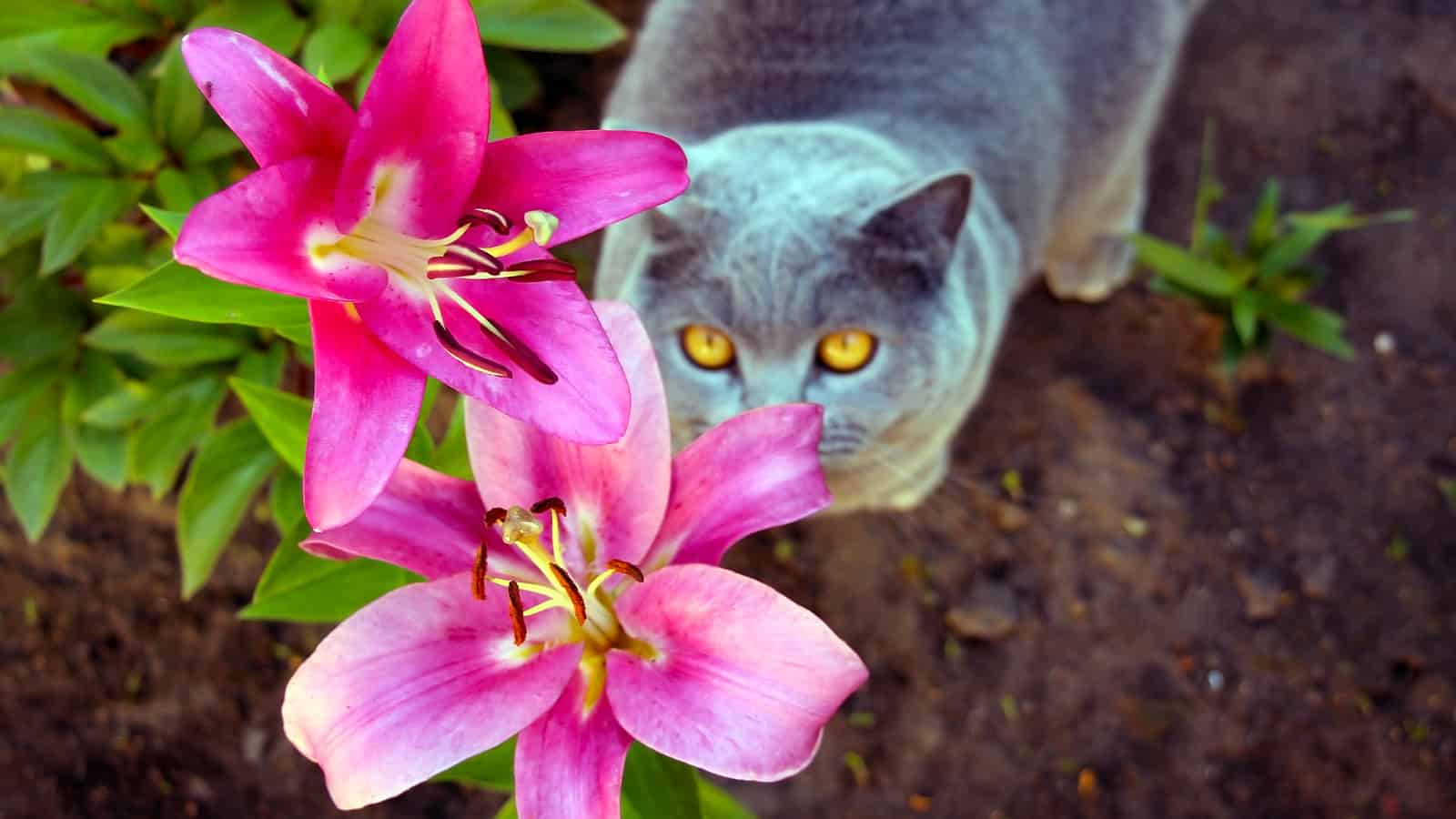
You might love having plants like lilies around your house, but did you know they're a no-go for your feline friend? In fact, lilies are so toxic to cats that even a little nibble can cause serious kidney problems.
It's not just lilies; many common houseplants are harmful to cats. Here's a list of some other plants to watch out for:
- Aloe Vera: Toxic, causing gastro upset, lethargy, and diarrhea.
- Devil’s Ivy: Causes mouth and throat irritation, drooling, and vomiting.
- Dumbcane: This leads to oral irritation, drooling, difficulty swallowing, and vomiting.
- Snake Plant: This can cause nausea, vomiting, and diarrhea.
- Jade Plant: This may lead to vomiting, neurological symptoms, and depression.
- Arrow-Head Vine: This can cause intense pain and irritation in the mouth, throat, stomach, eyes, and skin.
- Asparagus Fern: Harmful, causing gastrointestinal issues.
- English Ivy: Toxic, leading to gastrointestinal distress.
- Figwort: Dangerous, if ingested, can lead to vomiting, diarrhea, depression, anorexia, hypersalivation, and a wobbly gait.
- Gardenia: Causing mild vomiting, diarrhea, and hives.
So, when you're choosing greenery for your cat-friendly home, why not opt for cat-safe indoor plants that can transform your living space without the risk? Remember, it's not just about aesthetics; it's about keeping your curious kitty out of harm's way.
2. Human Medications
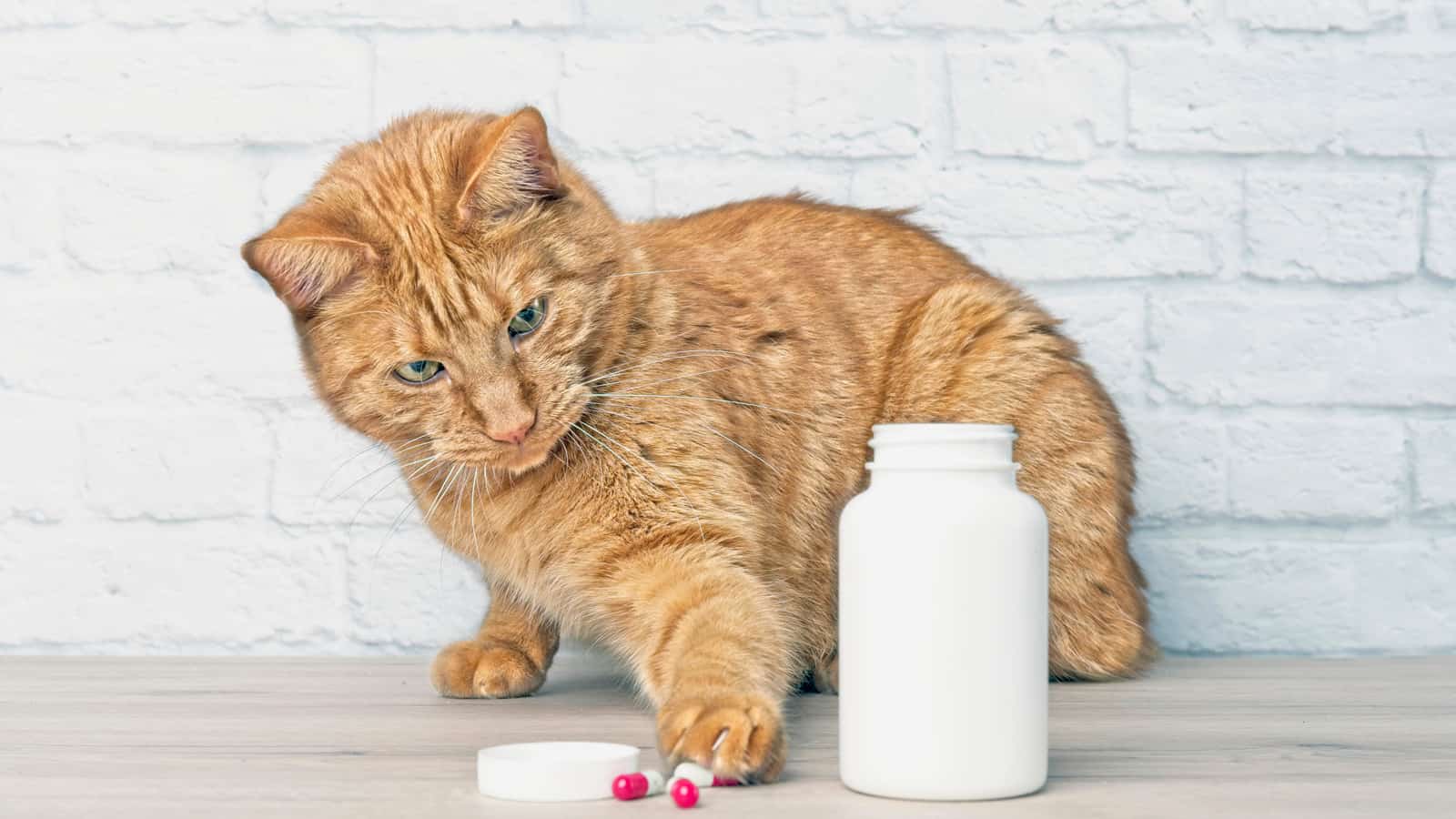
Here's a startling fact: a single tablet of acetaminophen (yes, the common Tylenol) can be fatal for your cat. And it's not just acetaminophen; ibuprofen and many other human medications are highly toxic to cats.
Their bodies just can't process these drugs like ours can. So, always keep your meds tucked away where your cat can't reach them.
It's not just about being cautious; it's about preventing a tragedy. Remember, cats are curious and might see your pill bottle as a new toy, not realizing the danger inside.
3. Cleaning Products
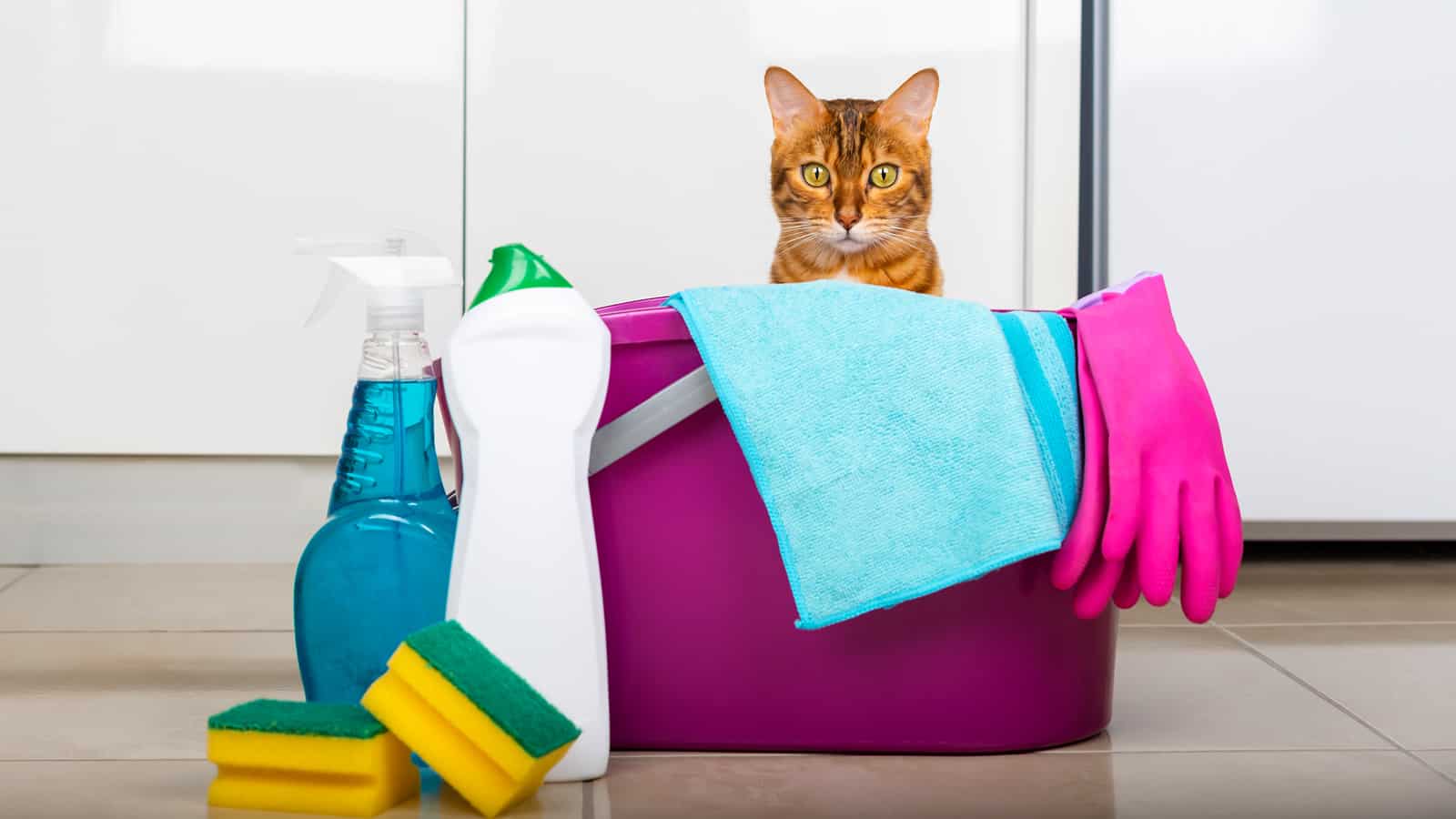
You might not know this, but those cleaning products under your sink could be a real danger to your cat. These products often contain chemicals like ammonia, bleach, chlorine, formaldehyde, and isopropyl alcohol, which are toxic to pets.
The level of toxicity and the severity of illness can vary greatly, depending on factors like concentration, exposure amount, and exposure method (ingested, inhaled, or contact).
The ASPCA Animal Poison Control Center indicates that about 8.3% of pet poison calls are related to exposure to household cleaning products. If a cat ingests, inhales, or comes into skin contact with these substances, the risk of harm is significant.
Therefore, it's important to keep these products out of reach and consider using pet-safe alternatives. When using regular cleaning products, ensure the area is well-ventilated and all surfaces are dry before allowing your cat access.
4. Essential Oils and Diffusers
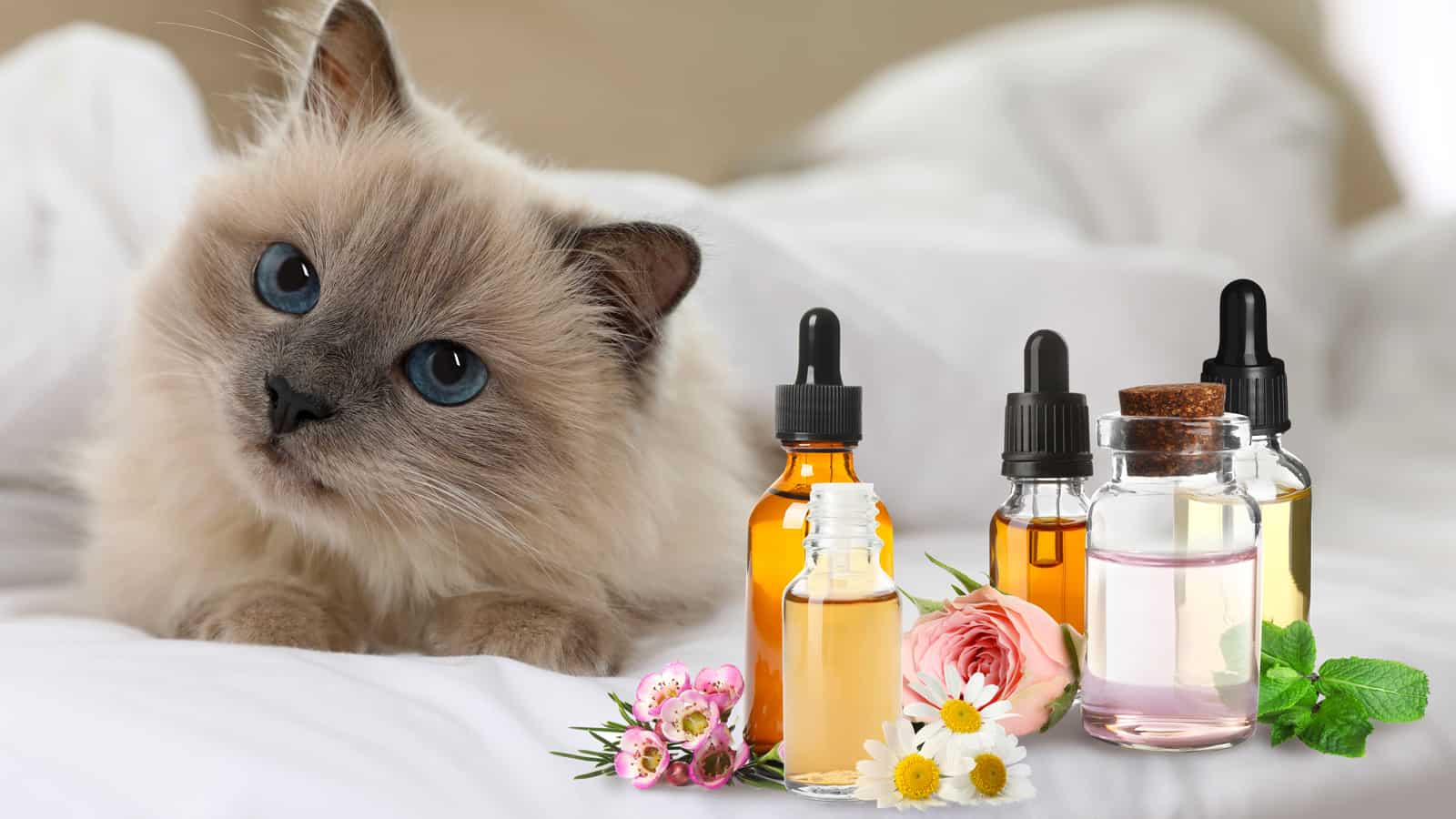
Essential oils might make your home smell great, but they can be a hidden danger to your cat. Highly susceptible to illness from breathing in these oils via diffusers, cats can also ingest them during grooming if the oils contact their skin.
Cats can't process these oils in their liver, leading to symptoms like drooling, vomiting, and, in severe cases, liver failure.
Oils such as wintergreen, citrus, and eucalyptus are particularly toxic. It's advised not to use these oils around cats without veterinary approval.
But what about catnip essential oil? Is it safe, or could it be too much for your cat? This is a tricky one – to find out more, you might want to check out articles discussing 'Is Catnip Essential Oil Safe For Cats?' You'll be surprised at what you find!
5. String and Small Objects
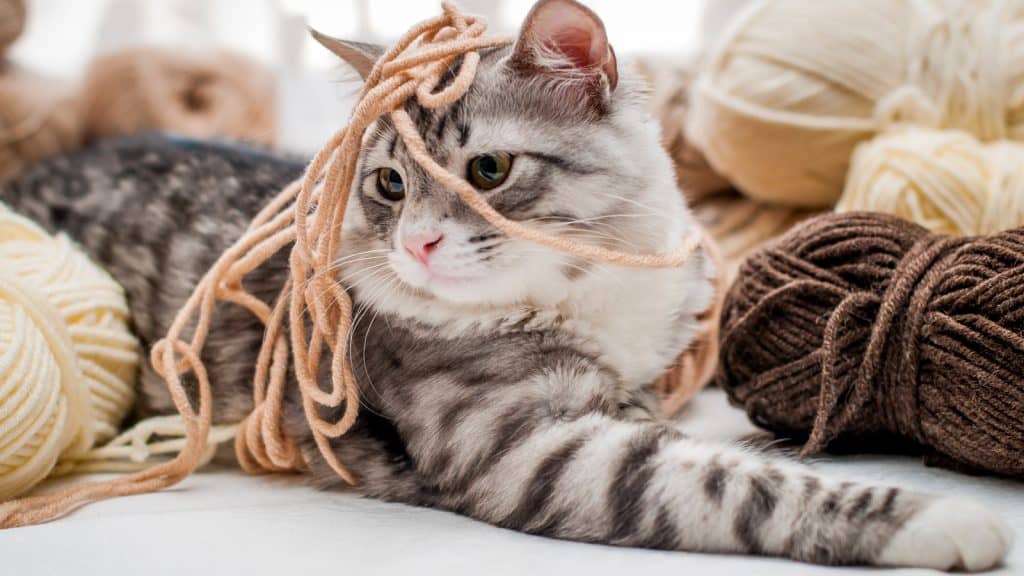
You know how your cat is drawn to playing with strings, yarn, or even rubber bands? While this seems like innocent fun, it can turn risky quickly. Cats often swallow these items, leading to intestinal blockages.
Such incidents are indeed serious, as the ingested object can cause the intestine to fold or bunch up, leading to the tearing of the intestinal wall. This type of obstruction is more common in cats than dogs, often involving items like thread or needles.
Commonly ingested items include string, thread, hair bands, rubber bands, small toys, and tinsel, and these obstructions can be partial, linear, or complete. Blockages like this can be fatal and often require surgery.
6. Open Windows
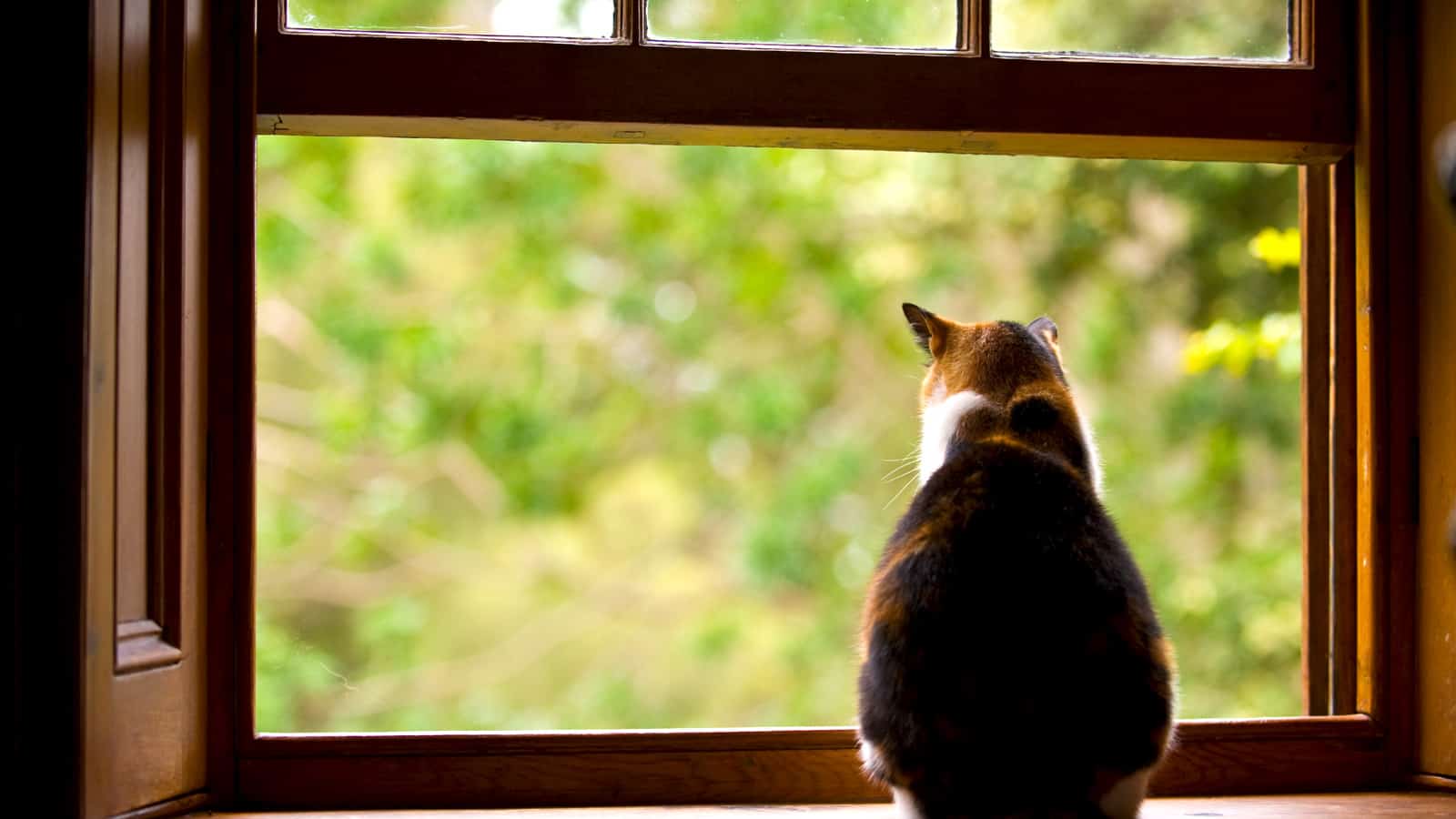
Who doesn't love a cat basking in the sunshine by an open window? But here's a startling fact: veterinarians often treat cats for serious injuries sustained from falls out of windows, an incident so common it has its own name - "High-Rise Syndrome."
Studies indicate that cats falling from two to six stories high are at greater risk of injury compared to higher falls, due to their inability to reach terminal velocity and adjust their body for landing.
Surprisingly, cats can survive falls from very high places due to their righting reflex and the ability to spread their body to slow down the fall, but injuries can still be severe. Just think about the case in New York where a cat fell 12 stories and survived – it's miraculous but not something you'd want to test!
7. Foods
Regarding your cat's diet, knowing that not all human foods are feline-friendly is crucial. For instance, chocolate, which we often love, is a big no-no for cats due to its theobromine content, potentially causing heart problems and even seizures.
Then there's garlic and onions; even in small quantities, they can damage a cat's red blood cells, leading to anemia. Grapes and raisins, seemingly harmless, can unexpectedly cause kidney failure in cats.
So, always double-check before sharing your snacks; a quick look at resources like '19 Common Foods That Are Harmful To Cats' can be a lifesaver for your furry friend.
Keeping Your Cat Safe: A Final Word
As we've explored, our homes can harbor numerous hazards for our curious feline friends. From toxic plants and dangerous human medications to risky household cleaners and enticing yet harmful foods, it's crucial to stay vigilant.
The key to keeping your cat safe is awareness and prevention. Understanding these risks and taking proactive steps can create a safer environment for your beloved pet.
Remember, a little caution can go a long way in ensuring your cat lives a happy, healthy life in your loving home.
Some elements on this page may have been created by our team using advanced AI to provide you with top-notch cat inspired ideas. Read more about our AI Content Policy.
